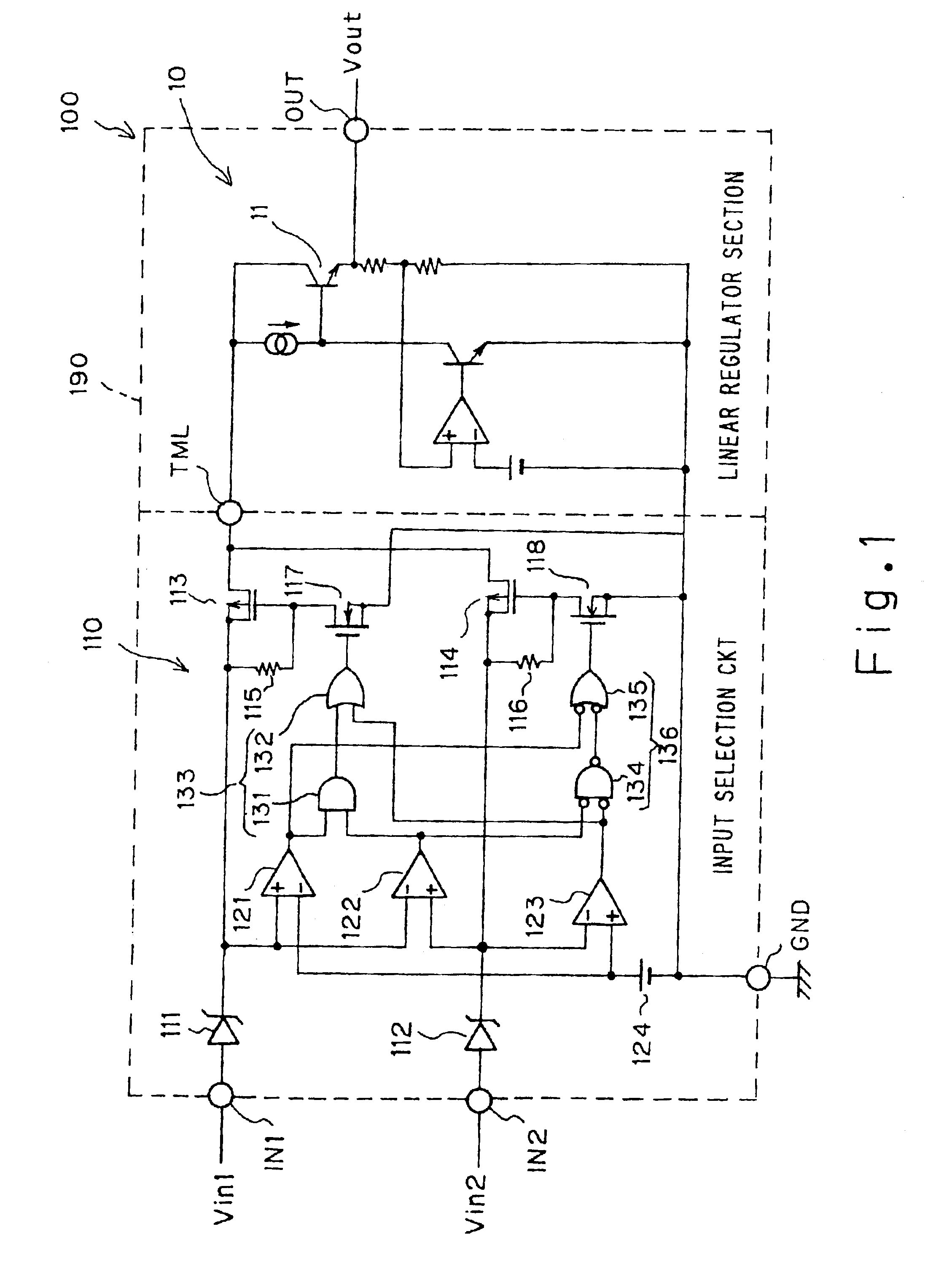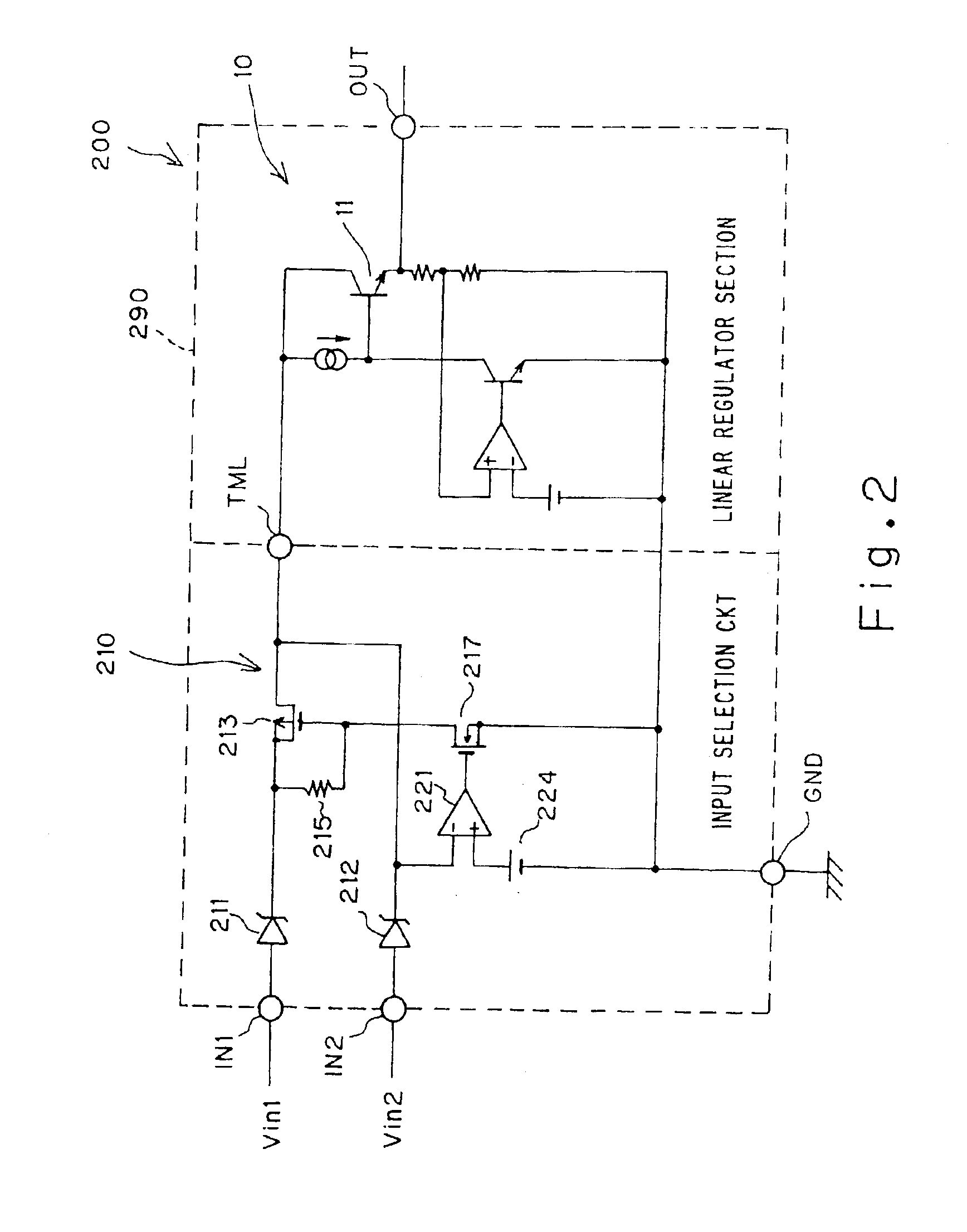DC-DC converter circuit, power supply selection circuit, and apparatus useful for increasing conversion efficiency
- Summary
- Abstract
- Description
- Claims
- Application Information
AI Technical Summary
Benefits of technology
Problems solved by technology
Method used
Image
Examples
second embodiment
[0085]The operation of the circuit is the same as that of the second embodiment shown in FIG. 2, and thus redundant explanation will be omitted. The reason why the transistor 11 is disposed outside the LSI chip 390 is as follows. The DC-DC converter circuit 300 is of a large current capacity so that the secondary end thereof is permitted to consume a very large electric power, and thus as the transistor 11, there is a need to use a transistor which is capable of withstanding consumption of the large electric power. In view of the above-mentioned matter, a large capacity of transistor is needed as the transistor 11, and in addition, there is a need to perform a heat radiation by installing, for example, a heat sink and the like. That is, the transistor 11 is not suitable for incorporation into the LSI chip.
[0086]Thus, in a DC-DC converter circuit of a linear regulator scheme, it happens that a transistor for the output voltage control is mounted outside.
fourth embodiment
[0087]FIG. 4 is a circuit diagram of a DC-DC converter circuit according to the present invention.
first embodiment
[0088]A DC-DC converter circuit 400 shown in FIG. 4 also comprises an input selection circuit 110, which is the power supply selection circuit of the present invention also shown in FIG. 1, and a switching regulator section 20 which is the same as the switching regulator shown in FIG. 10. The circuit operation of the input selection circuit 110 and the switching regulator section 20 has been already explained, and thus redundant explanation is omitted. The DC-DC converter circuit 400 shown in FIG. 4 is loaded on an LSI chip 490, except for a coil 31 and a capacitor 32, which are part of the switching regulator 20. The coil 31 and the capacitor 32 are considerably large and are not suitable for placement on the LSI chip.
[0089]The input selection circuit 110 receives two input voltages Vin1 and Vin2 (it is acceptable that either of the input voltages Vin1 and Vin2 may be a low voltage) applied through the two input terminals IN1 and IN2, respectively. Of the two input voltages Vin1 an...
PUM
 Login to View More
Login to View More Abstract
Description
Claims
Application Information
 Login to View More
Login to View More - R&D
- Intellectual Property
- Life Sciences
- Materials
- Tech Scout
- Unparalleled Data Quality
- Higher Quality Content
- 60% Fewer Hallucinations
Browse by: Latest US Patents, China's latest patents, Technical Efficacy Thesaurus, Application Domain, Technology Topic, Popular Technical Reports.
© 2025 PatSnap. All rights reserved.Legal|Privacy policy|Modern Slavery Act Transparency Statement|Sitemap|About US| Contact US: help@patsnap.com



